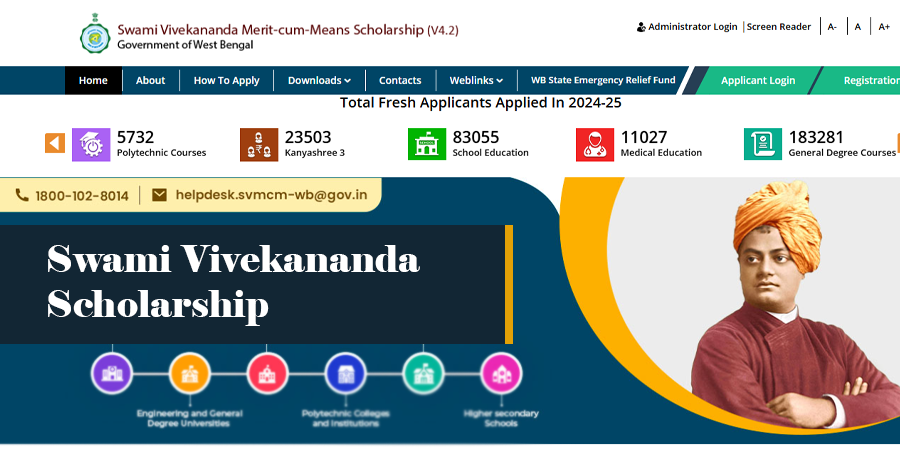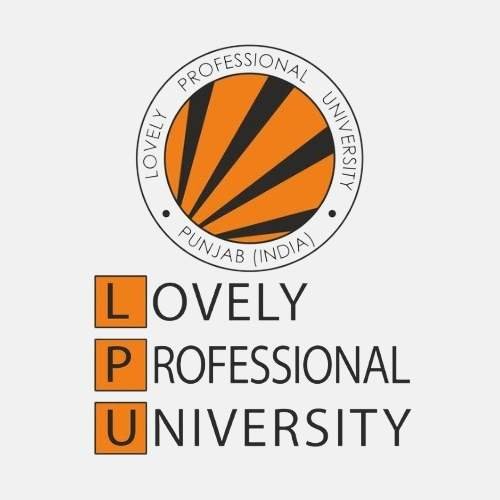CUET and JEE Mains are two big entrance exams in India, but they are for different types of courses. CUET is mainly for students who want to take admission in regular UG courses like B.A., B.Com, B.Sc., etc., while JEE Mains is for those who want to become engineers.
Every year, many students get confused about which exam is better for them. Both exams are conducted by the NTA and can help you get into top colleges, but they lead to very different careers. One takes you towards engineering and technical fields, while the other gives you many non-technical course options in central universities.
In this blog, we will explain the difference between CUET Vs JEE Mains in a simple way. We’ll talk about their eligibility, syllabus, exam pattern, career options, and help you choose which one is better for you.
What is CUET?
CUET stands for Common University Entrance Test. It is a national-level exam conducted by NTA (National Testing Agency) for students who want to take admission in undergraduate (UG) courses like B.A., B.Com, B.Sc., BBA, and others.
Many top central universities in India, like Delhi University (DU), BHU, JNU, and Jamia Millia Islamia, use CUET scores to give admission.
CUET is open to students from the Arts, Commerce, and Science streams. You can choose subjects in the exam based on the course you want to study. The paper includes questions from language, subject-related topics, and general knowledge or reasoning.
What is JEE Mains?
JEE Mains, or Joint Entrance Examination Main, is a national-level exam for engineering aspirants in India. It is conducted by the National Testing Agency (NTA) and is the first step for students who want to get into top engineering colleges.
By clearing JEE Mains, you can get admission into well-known colleges like NITs (National Institutes of Technology), IIITs (Indian Institutes of Information Technology), and other top government engineering colleges.
It is also the qualifying exam for JEE Advanced, which is needed if you want to get into the prestigious IITs (Indian Institutes of Technology).
CUET vs JEE Mains: Key Differences
CUET and JEE Mains are both national-level exams conducted by NTA, but they are meant for very different purposes. Here’s a quick comparison to help you understand the major differences between the two:
Feature | CUET | JEE Mains |
Full Form | Common University Entrance Test | Joint Entrance Examination – Main |
Purpose | Admission to UG courses in central universities (like B.A., B.Com, B.Sc.) | Admission to engineering colleges (like B.Tech, B.E.) |
Conducted By | NTA (National Testing Agency) | NTA (National Testing Agency) |
Course Focus | Arts, Commerce, Science (non-engineering courses) | Engineering and technical courses |
Subjects Tested | Language, Domain subjects, General Test | Physics, Chemistry, Maths |
Stream Eligibility | Open to all streams (Arts, Commerce, Science) | Only for the Science stream with Physics, Chemistry, and Maths |
Exam Level | Moderate | Tough and highly competitive |
Top Colleges Covered | DU, BHU, JNU, AMU, JMI, etc. | NITs, IIITs, CFTIs; Qualifier for JEE Advanced to enter IITs |
Eligibility | Class 12 pass (varies by university) | Class 12 pass with PCM + 75% (General)/65% (SC/ST) or top 20% in board exams |
Exam Pattern | MCQ-based sections for language, domain subjects, and the general test | MCQ and numerical questions; fixed pattern for PCM |
Career Options | General fields: Arts, Business, Management, Govt. exams, etc. | Technical fields: Engineering, IT, Software, Research, etc. |
JEE Mains vs CUET: Eligibility Criteria
CUET Eligibility
- To be eligible for CUET, students must have passed Class 12 or an equivalent examination from a recognized board.
- There is no age limit for appearing in the CUET exam.
- Students from any stream—Arts, Commerce, or Science—can apply based on the course they choose.
- General category students should have at least 50% marks in their Class 12 exams.
- SC/ST/OBC students should have at least 45% marks in their Class 12 exams.
- Some universities may have their own specific course-wise eligibility criteria.
JEE Mains Eligibility
- To be eligible for JEE Main, students must have passed or be appearing in Class 12 (or equivalent) from a recognized board.
- Physics, Chemistry, and Mathematics must be core subjects in Class 12.
- There is no age limit for appearing in the JEE Main exam.
- Students can attempt JEE Main for three consecutive years starting from the year they passed Class 12.
- There is no minimum percentage required to appear for the exam.
CUET vs JEE Mains: Syllabus and Exam Pattern
CUET Syllabus
The CUET syllabus is generally based on the Class 12 curriculum, so students from any board can follow it easily. It covers three main sections depending on the course you’re applying for:
- Language Proficiency: Includes English or another selected language. Questions are based on reading comprehension, vocabulary, grammar, etc.
- Domain-Specific Subjects: Includes subjects like Mathematics, Physics, Chemistry, Economics, Accountancy, Business Studies, Political Science, etc., depending on your chosen program.
- General Test: Covers General Knowledge, Current Affairs, Logical Reasoning, and Quantitative Aptitude.
JEE Syllabus
- JEE focuses deeply on three core subjects — Physics, Chemistry, and Mathematics.
- The syllabus is based on NCERT Class 11 and Class 12 textbooks.
- It covers both theoretical concepts and problem-solving skills, especially for engineering aspirants.
- For students who qualify JEE Main and aim for IITs, JEE Advanced tests the same subjects but with a much higher difficulty level and complex questions.
CUET vs JEE Exam Pattern
Feature | CUET (Common University Entrance Test) | JEE (Joint Entrance Examination) |
Exam Mode | Computer-Based Test (Online) | Computer-Based Test (Online) |
Duration | Around 2 hours per section | 3 hours for JEE Main; 3 hours for each JEE Advanced paper |
Sections | Language, Domain Subjects, General Test | Physics, Chemistry, Mathematics |
Subjects Tested | Based on course: up to 6 domain subjects, languages, general test | Physics, Chemistry, and Mathematics only |
Question Type | Multiple Choice Questions (MCQs) | MCQs, Numerical Value Type, Matrix Match (Advanced) |
Syllabus Basis | Class 12 NCERT/Board curriculum | Class 11 & 12 NCERT syllabus |
Marking Scheme | +5 for correct answer, -1 for wrong answer (may vary) | +4 for correct MCQ, -1 for wrong MCQ; varies in Advanced |
Difficulty Level | Moderate | High (especially JEE Advanced) |
Attempts Allowed | Once a year | 2 times a year (Main), 2 attempts total (Advanced) |
Career Opportunities Through CUET Vs JEE Mains
Career Opportunities Through CUET
CUET gives you admission to a wide range of undergraduate programs in top universities like DU, BHU, JNU, and others. These programs are available in streams like Arts, Commerce, and Science.
Popular Courses Through CUET:
- A. – History, Political Science, Sociology, Psychology, etc.
- Com. – Ideal for careers in finance, business, and accounting
- Sc. – Suitable for science-related fields like Physics, Chemistry, and Biology
- BBA – For students interested in business and management
Career Paths After CUET:
- Government jobs (UPSC, SSC, banking, etc.)
- Teaching, journalism, social work, law
- Marketing, HR, public relations, or civil services
- Research, academia, and postgraduate studies
Career Opportunities Through JEE
JEE is focused on engineering and architecture programs. It leads to top institutions like IITs, NITs, IIITs, and other reputed engineering colleges.
Popular Courses Through JEE:
- Tech/B.E. – Computer Science, Mechanical, Civil, Electrical, etc.
- Arch – For students aiming to become architects
Career Paths After JEE:
- Software development, data science, AI/ML
- Core engineering roles in mechanical, civil, or electronics fields
- Jobs in top companies like Infosys, TCS, Google, and PSUs like ISRO, ONGC, DRDO
Higher education like M.Tech, MBA, or studying abroad
CUET Vs JEE Mains: Which is Better?
JEE Mains is better if you want to become an engineer or work in the tech field. CUET is better if you want to study arts, commerce, science (non-engineering), or management.
JEE Mains gives you a chance to study in top engineering colleges like IITs and NITs. CUET helps you get into well-known universities like Delhi University, BHU, and others for many different courses.
The best choice depends on what you want to study and what kind of job you want in the future.
JEE Mains vs CUET: Which is more difficult?
JEE Mains is more difficult than CUET. JEE Mains tests your understanding of Physics, Chemistry, and Maths with tricky questions. You need strong problem-solving skills and deep knowledge of Class 11 and 12 concepts.
CUET, on the other hand, is easier compared to JEE Mains. It covers language, general knowledge, and subject-based questions depending on the course. The questions are more straightforward and based mostly on Class 12 topics.
So, if you’re choosing based on difficulty level alone, CUET is the easier option, while JEE Mains is more challenging but offers entry to top engineering colleges.
You May Also Read More Blogs
Final Thoughts
CUET and JEE Mains are both good exams, but they are for different types of students. If you want to become an engineer or work in the tech field, then JEE Mains is the better option. It helps you get into top engineering colleges like IITs and NITs. But if you want to study arts, commerce, science (non-engineering), or management, then CUET is a better choice.
It gives you admission to top universities like Delhi University and BHU. So, before choosing, think about what subjects you like and what kind of job you want in the future. Choose the exam that suits your goals and interests.
Frequently Asked Questions
Q1. Can I appear for both CUET and JEE Mains?
Ans: Yes, you can appear for both exams if you meet the eligibility. Many students apply for both to have more choices for college admission.
Q2. Is CUET easier than JEE Mains?
Ans: Yes, CUET is generally easier than JEE Mains. CUET is based on Class 12 topics and has simpler questions, while JEE Mains is more difficult and needs strong knowledge of Physics, Chemistry, and Maths.
Q3. Which exam gives better job options — CUET or JEE?
Ans: JEE can lead to high-paying jobs in engineering and tech fields. CUET gives you many career options in fields like arts, commerce, science, management, teaching, and civil services, depending on your course.
Q4. Can I get admission to IITs through CUET?
Ans: No, you can’t get into IITs through CUET. To get into IITs, you must clear JEE Mains and then JEE Advanced.
Q5. Do all colleges accept CUET scores?
Ans: No, only central universities and some other universities that are part of CUET accept CUET scores for admission. Many private colleges have their admission process.


















